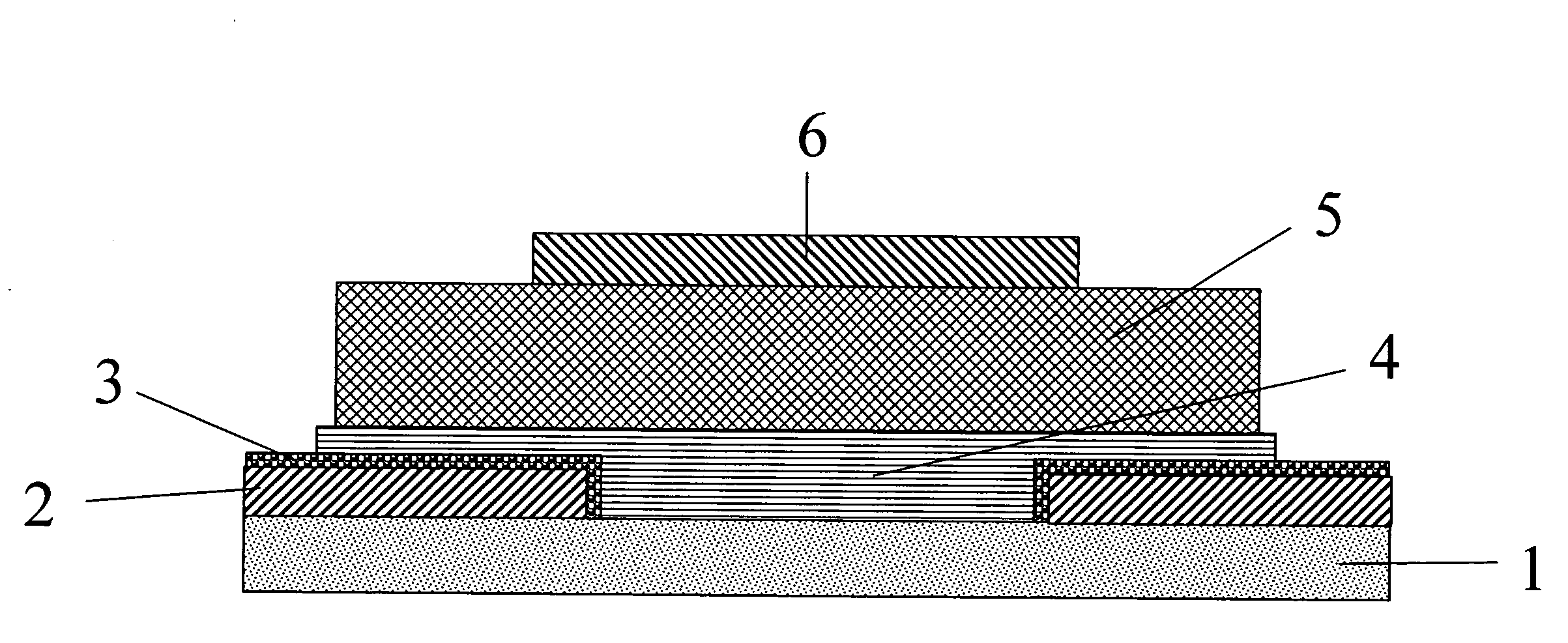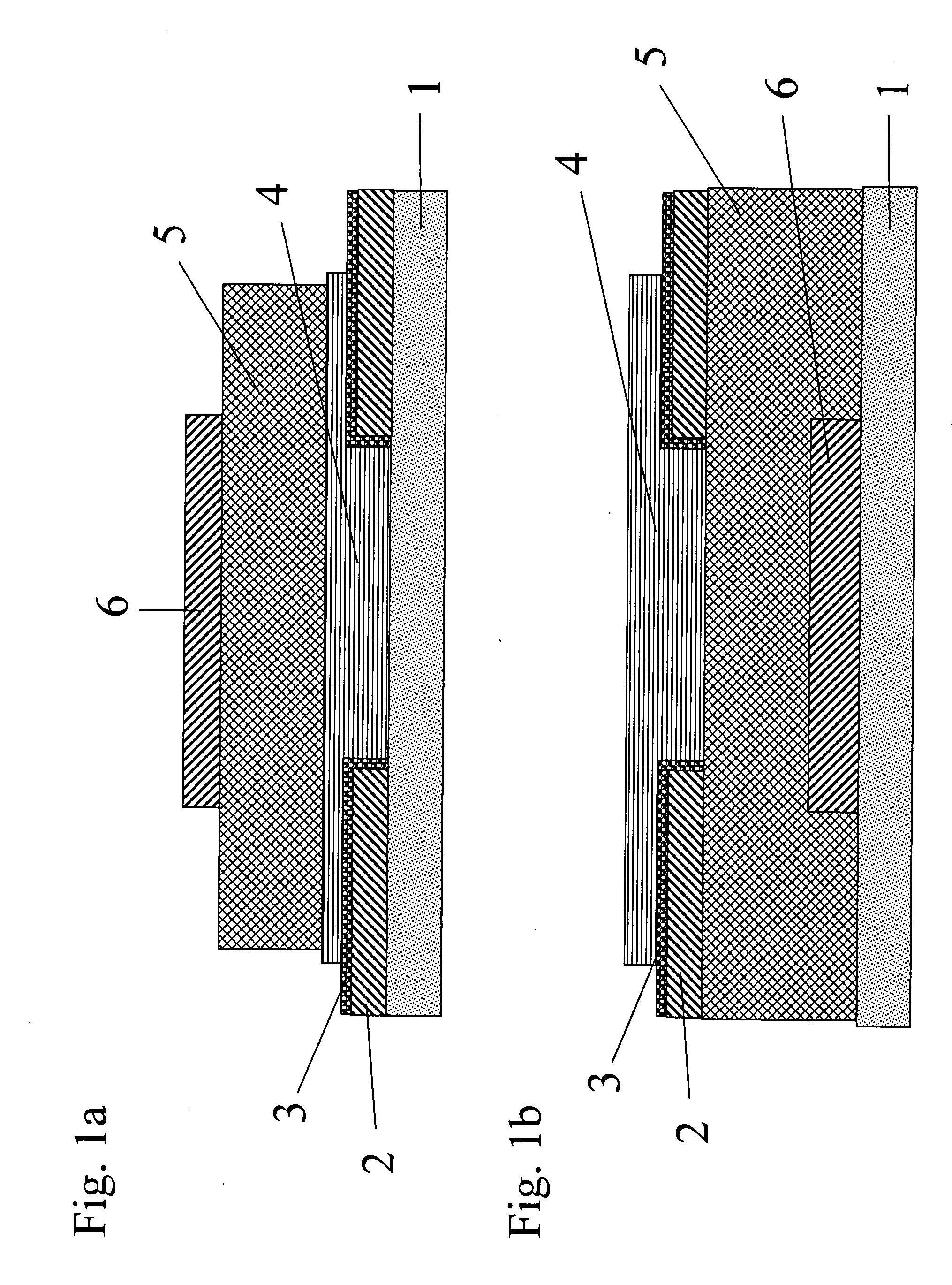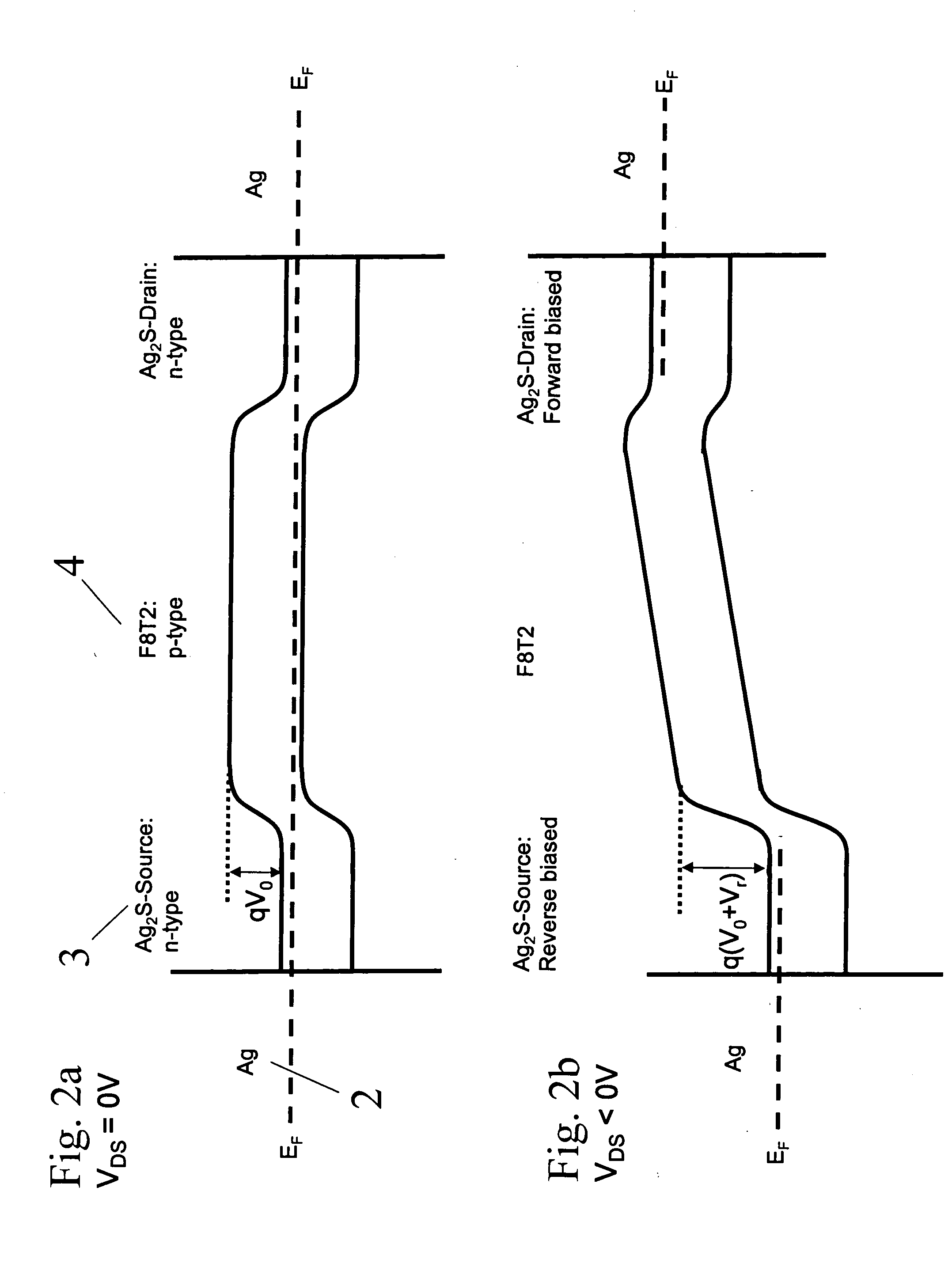Photosensing thin film transistor
a thin film transistor and photosensitive technology, applied in the field of photosensitive thin film transistors, can solve the problems of slow response time and drain current decay within a time frame ranging from seconds to tens of seconds, and achieve the effect of improving photosensitivity and fast response tim
- Summary
- Abstract
- Description
- Claims
- Application Information
AI Technical Summary
Benefits of technology
Problems solved by technology
Method used
Image
Examples
Embodiment Construction
[0046]One embodiment of the present invention is a photosensing hybrid organic / inorganic thin film transistor (PHOITFT) comprising an insulating substrate with a substrate surface, a semiconductor organic layer, an electrically conducting source electrode that is covered with a thin photoconducting semiconductor coating, said semiconductor coating being in electrical contact with the organic semiconductor layer, an electrically conducting drain electrode that is covered with a thin photoconducting semiconductor coating, said semiconductor coating being in electrical contact with the organic semiconductor layer, an insulating layer, and an optically transparent and electrically conducting gate electrode positioned adjacent to the insulating layer.
[0047]The thin photoconducting semiconductor coatings on the source contact and on the drain contact are of the opposite conductivity type as compared to the material of the organic semiconductor layer, i.e. n-type in case of a p-type organi...
PUM
| Property | Measurement | Unit |
|---|---|---|
| thickness | aaaaa | aaaaa |
| light absorption coefficient | aaaaa | aaaaa |
| gate voltages | aaaaa | aaaaa |
Abstract
Description
Claims
Application Information
 Login to View More
Login to View More - R&D
- Intellectual Property
- Life Sciences
- Materials
- Tech Scout
- Unparalleled Data Quality
- Higher Quality Content
- 60% Fewer Hallucinations
Browse by: Latest US Patents, China's latest patents, Technical Efficacy Thesaurus, Application Domain, Technology Topic, Popular Technical Reports.
© 2025 PatSnap. All rights reserved.Legal|Privacy policy|Modern Slavery Act Transparency Statement|Sitemap|About US| Contact US: help@patsnap.com



